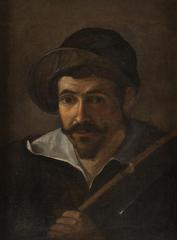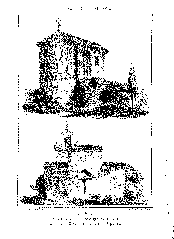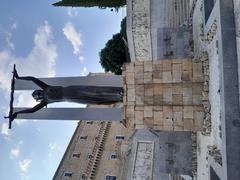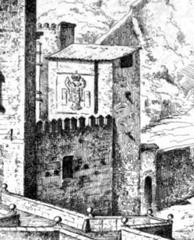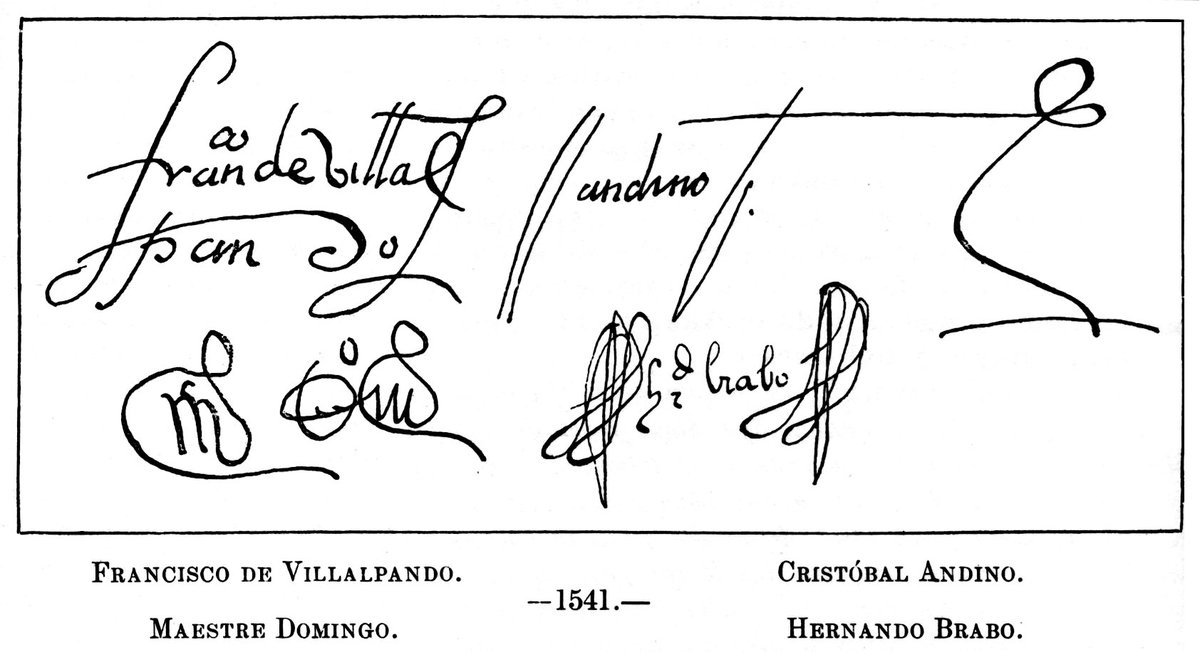
Visiting Catedral de Santa María in Toledo: Hours, Tickets, and Tips
Date: 17/07/2024
Introduction
The Catedral de Santa María, commonly known as the Toledo Cathedral, is a monumental edifice that stands as a testament to Spain’s rich medieval history and architectural brilliance. Located in the heart of Toledo, this cathedral is not only a spiritual center but also an iconic symbol of the city’s cultural and historical heritage. The construction of the cathedral began in 1226 and spanned over two centuries, culminating in a masterpiece that blends Gothic, Renaissance, and Baroque elements. The site itself has a layered history, originally hosting a Visigothic church which was later transformed into a mosque during the Moorish occupation, and finally reconsecrated as a Christian cathedral following the Reconquista (Toledo Cathedral History). This guide will take you through the cathedral’s fascinating history, architectural marvels, artistic contributions, and essential visitor information, ensuring a comprehensive understanding of one of Spain’s most significant Gothic structures.
Table of Contents
- Introduction
- History of Toledo Cathedral
- Architectural Highlights
- Historical Significance
- Artistic Contributions
- Visitor Information
- Preservation and Restoration
- Conclusion
- Frequently Asked Questions (FAQ)
- Call to Action
History of Toledo Cathedral
Origins and Early Construction
The origins of the Toledo Cathedral date back to the 6th century when Visigothic King Reccared I converted to Christianity and established a church on the site. This early church was dedicated to Saint Mary and served as a significant religious center during the Visigothic period. Following the Muslim conquest of Spain in the early 8th century, the church was converted into a mosque. It wasn’t until the Christian reconquest of Spain, known as the Reconquista, that the site returned to Christian hands. In 1085, King Alfonso VI of Castile recaptured Toledo, and the mosque was consecrated as a Christian cathedral once again.
Gothic Transformation
The most significant transformation of the Toledo Cathedral began in 1226 under the reign of King Ferdinand III of Castile. Influenced by the French Gothic architectural trends of the time, the construction was a massive undertaking that spanned over two centuries. The final touches were completed in 1493 during the reign of the Catholic Monarchs, Ferdinand and Isabella. Maestro Martín, the master architect initially responsible for the design, incorporated elements such as pointed arches, ribbed vaults, and flying buttresses. The cathedral’s layout follows a Latin cross plan, with a central nave flanked by double aisles and a transept.
Architectural Highlights
One of the most striking features of the Toledo Cathedral is its impressive façade, which includes three grand portals. The central portal, known as the Puerta del Perdón (Portal of Forgiveness), is adorned with intricate sculptures depicting scenes from the Last Judgment. The north portal, Puerta del Reloj (Portal of the Clock), and the south portal, Puerta de los Leones (Portal of the Lions), are equally ornate, showcasing the craftsmanship of medieval sculptors. The interior of the cathedral is equally breathtaking. The high altar, known as the Altar Mayor, is a masterpiece of Gothic art, featuring a stunning retable (altarpiece) that depicts scenes from the life of Christ and the Virgin Mary. The choir stalls, carved from walnut wood, are another highlight, showcasing intricate designs that include biblical scenes and figures of saints.
Historical Significance
The Toledo Cathedral has played a pivotal role in the religious and political history of Spain. It served as the primary seat of the Archdiocese of Toledo, one of the most influential ecclesiastical jurisdictions in medieval Spain. The cathedral was the site of numerous important events, including the coronation of kings and significant religious ceremonies. One notable historical event associated with the Toledo Cathedral is the Council of Toledo, a series of church councils held in the 7th century that played a crucial role in shaping the early Christian church in Spain. These councils addressed various theological and administrative issues, including the establishment of the Nicene Creed as the official doctrine of the church.
Artistic Contributions
The Toledo Cathedral is not only a religious and historical landmark but also a treasure trove of artistic masterpieces. The cathedral houses an extensive collection of artworks, including paintings, sculptures, and stained glass windows. One of the most famous works of art in the cathedral is El Transparente, a Baroque altarpiece created by Narciso Tomé in the 18th century. This stunning piece features a combination of sculpture, painting, and architecture, creating a dramatic effect enhanced by the natural light filtering through the cathedral’s windows. The cathedral’s sacristy is home to an impressive collection of paintings by some of Spain’s most renowned artists, including El Greco, Goya, and Velázquez. El Greco’s “The Disrobing of Christ” is one of the highlights of the collection, showcasing the artist’s distinctive style and mastery of color and composition.
Visitor Information
Toledo Cathedral Visiting Hours
The Toledo Cathedral is open to visitors at the following times:
- Monday to Friday: 10:00 AM - 6:30 PM
- Saturday: 10:00 AM - 6:30 PM
- Sunday: 2:00 PM - 6:30 PM Please note that visiting hours may vary on public holidays and during special events.
Toledo Cathedral Tickets
Tickets can be purchased at the cathedral entrance or online through the official Toledo Cathedral website. Prices are as follows:
- General Admission: €10
- Reduced Admission (students, seniors, etc.): €8
- Children under 12: Free
Travel Tips
- Accessibility: The cathedral is accessible to visitors with disabilities, with ramps and elevators available.
- Guided Tours: Consider booking a guided tour to gain deeper insights into the cathedral’s history and art.
- Best Time to Visit: Early mornings or late afternoons are ideal for avoiding crowds and enjoying a quieter visit.
- Photographic Spots: The Puerta del Perdón and the Altar Mayor offer excellent photo opportunities.
- Nearby Attractions: After visiting the cathedral, explore nearby attractions such as the Alcázar of Toledo, the Monastery of San Juan de los Reyes, and the Synagogue of Santa María la Blanca.
Preservation and Restoration
Over the centuries, the Toledo Cathedral has undergone numerous restoration and preservation efforts to maintain its structural integrity and artistic beauty. In the 19th century, significant restoration work was carried out under architect Narciso Pascual Colomer to preserve the Gothic character of the cathedral while addressing structural issues. More recent restoration efforts have focused on preserving the cathedral’s artworks and architectural features. In 2018, a major restoration project was undertaken to clean and restore the cathedral’s façade, revealing the original beauty of the stonework.
Conclusion
The Toledo Cathedral continues to be a vibrant center of religious and cultural life in Toledo. It attracts thousands of visitors each year who come to admire its architectural splendor and artistic treasures. The cathedral also serves as a venue for important religious ceremonies and events, maintaining its historical significance as a place of worship and community.
For more detailed information on the history and significance of the Toledo Cathedral, you can visit the official Toledo Cathedral website.
Frequently Asked Questions (FAQ)
Q: What are the visiting hours for the Toledo Cathedral?
A: The Toledo Cathedral is open Monday to Saturday from 10:00 AM to 6:30 PM, and on Sunday from 2:00 PM to 6:30 PM.
Q: How much are the tickets for the Toledo Cathedral?
A: General admission is €10, reduced admission is €8, and children under 12 can enter for free.
Q: Are guided tours available at the Toledo Cathedral?
A: Yes, guided tours are available and can provide deeper insights into the cathedral’s history and art.
Q: Is the Toledo Cathedral accessible to visitors with disabilities?
A: Yes, the cathedral is accessible with ramps and elevators available for visitors with disabilities.
Q: What are some nearby attractions to the Toledo Cathedral?
A: Nearby attractions include the Alcázar of Toledo, the Monastery of San Juan de los Reyes, and the Synagogue of Santa María la Blanca.
Call to Action
For more travel tips and updates on historical sites like the Toledo Cathedral, download the Audiala mobile app, check out our other related posts, and follow us on social media.
In summary, the Catedral de Santa María in Toledo is a site of immense historical, religious, cultural, and architectural significance. Its rich history, stunning architecture, and impressive art collection make it a must-visit destination for anyone traveling to Spain.
References
- Toledo Cathedral - History, Visiting Hours, Tickets, and Travel Tips. (2023). Toledo Cathedral History






